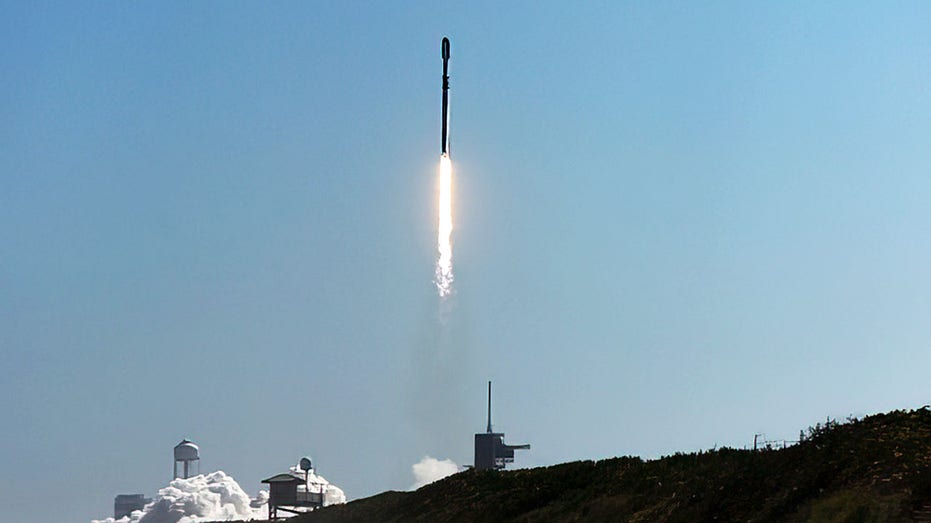Solar storm sends SpaceX Starlink satellites out of orbit
SpaceX still has nearly 2,000 Starlink satellites orbiting Earth
A geomagnetic storm has significantly impacted SpaceX's newest fleet of Starlink satellites.
As many as 40 of the 49 small satellites launched on the afternoon of Feb. 3 from Florida's Kennedy Space Center are now tumbling out of orbit and have re-entered or will re-enter the Earth's atmosphere.
In a statement issued on Tuesday, the company explained that the 49 satellites had been deployed into their intended orbit, with a perigee of approximately 210 kilometers above the Earth and that each satellite achieved controlled flight.
FLORIDA COLLEGE STUDENT SAYS FAA GRANTED HIS REQUEST TO TRACK ELON MUSK JETS
The perigee is the point in the orbit where the object in question is closest to the Earth.
The aerospace company noted that it deploys its satellites into lower orbits so that any satellite that does not pass initial system checkouts will "quickly be deorbited by atmospheric drag."

A SpaceX Falcon 9 rocket launches from pad 39A at the Kennedy Space Center in Cape Canaveral, Florida, on Feb. 3, 20122. The rocket carried 49 Starlink internet satellites for a broadband network. (Paul Hennessy/SOPA Images/LightRocket via Getty Images)
"Unfortunately, the satellites deployed on Thursday were significantly impacted by a geomagnetic storm on Friday. These storms cause the atmosphere to warm and atmospheric density at our low deployment altitudes to increase. In fact, onboard GPS suggests the escalation speed and severity of the storm caused atmospheric drag to increase up to 50% higher than during previous launches," SpaceX wrote.
"The Starlink team commanded the satellites into a safe-mode where they would fly edge-on (like a sheet of paper) to minimize drag – to effectively "take cover from the storm" – and continued to work closely with the Space Force’s 18th Space Control Squadron and LeoLabs to provide updates on the satellites based on ground radar," it said.
CLICK HERE TO READ MORE ON FOX BUSINESS
According to SpaceX, preliminary analysis shows the increased drag at the low altitudes had prevented the satellites from leaving safe-mode to begin "orbit raising maneuvers."
The company assured that the deorbiting satellites "pose zero collision risk" with other satellites and burn up upon atmospheric reentry.
"This unique situation demonstrates the great lengths the Starlink team has gone to ensure the system is on the leading edge of on-orbit debris mitigation," the statement concluded.
SpaceX has ‘tremendous lead’ over Blue Origin: Michio Kaku
Theoretical physicist Michio Kaku argues Elon Musk’s company has accomplished more feats in space exploration than Jeff Bezos’ Blue Origin.
SpaceX still has nearly 2,000 Starlink satellites orbiting Earth and providing internet service to remote corners of the world.
GET FOX BUSINESS ON THE GO BY CLICKING HERE
Each satellite weighs roughly 575 pounds.
Geomagnetic storms are caused by intense solar activity, like solar flares.
The Associated Press contributed to this report.






















